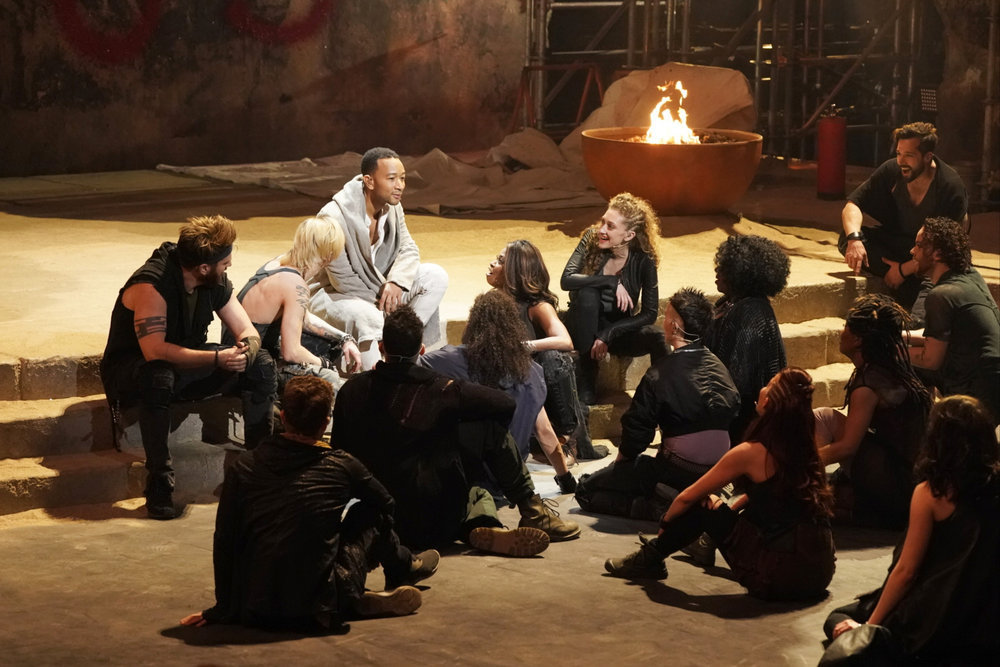It is no wonder that “The Tailor of Inverness,” which made its U.S. premier on Tuesday, sold out its entire month-long run by the end of its first week at the 2008 Edinburgh (Scotland) Fringe Festival. The play is a stellar representation of the kind of beauty and power that theater can and should be.

The play is written by Matthew Zajac, who is also the only speaking performer in the show. We follow Zajac and his father on their journeys through Europe, where the father is traded between various militaries throughout World War II, traveling through his native Poland, Ukraine, Iran, Egypt and Italy before finding a home in Scotland as a tailor. Zajacʼs journey involves retracing his father’s path to uncover the past secrets that Zajacʼs father never spoke of.
The story itself leaves the audience’s emotions very raw and visible. Particularly those of Ukrainian and Polish descent will find a deeply personal connection to the story. However, the story is incredibly universal. In the United States, many people’s families left their war-torn and oppressed countries in hopes of finding a better future elsewhere, just like Zajacʼs father.
“The Tailor of Inverness” makes the most of a non-linear but realistic storytelling format, jumping between characters, times and places. The style is much more common at the Fringe Festival, and it is a shame more American plays do not use the style. Too often, it is a realistic play with a linear plot, or absurdist and out-of-order storytelling. A middle ground is possible, as showcased by this gem of a play.
The play also makes notable use of technology, combining video with dramatic lighting and sound to switch between characters or events. The videos include subtitles, thematic images and clips of the various people Zajac encounters in his father’s homeland. Regardless of which type of video it is, it never fails to bring up intense emotions. The videos are well thought out, with each serving a distinct and clear purpose.
Besides writing this fantastic play, Zajac also gives a startlingly wonderful performance as both himself and his father. The distinction between the two is clear, with neither being viewed through rose-colored glasses. Their best qualities and imperfections that make them human are not stated blatantly, but they are obvious enough through Zajacʼs subtle nuances assigned to each character. For someone who is old enough to have graduated from the Bristol University in the early 1980s, Zajac certainly has a powerful physical presence. He swings around a rolling clothing rack easily, leaping over the lower bar like an oversized Skip-It.
Gavin Marwick, the fiddle player and only other performer in the play, deserves enormous credit. He, like Zajac, never leaves the stage. His breaks between playing are few and far between. The style is distinctly of Eastern Europe switching from long, clear single notes to feverous fast-paced sequences, contributing much of the emotional tone to the play.
The designers of the production are not to be ignored, either. Costumes are key to the piece. Various military jackets represent the various periods of Zajacʼs fatherʼs life during World War II. A sweet, bowed light blue dress becomes symbolic of lies and heartbreak. The lighting is brilliant. The scenes in the tailor shop in “Inverness” are always well-lit and lighthearted, while wartime scenes are kept to menacing darkness.
Though we have been told Fridayʼs performance is sold out, this is not a show to miss. Most Americans had to travel roughly 3,000 miles to see this play until now, and it would have been well worth the trip. This is theater at its best, and it is only in the country, let alone Amherst, until Friday.
Alissa Mesibov can be reached for comment at [email protected].













Phyllis Kalb • Feb 7, 2012 at 4:47 pm
Alissa is such a brilliant writer; able to tell the reader about the author and the play with a most fascinating description. Obviously the play has much merit and if possible I would definitely attend this special play!!